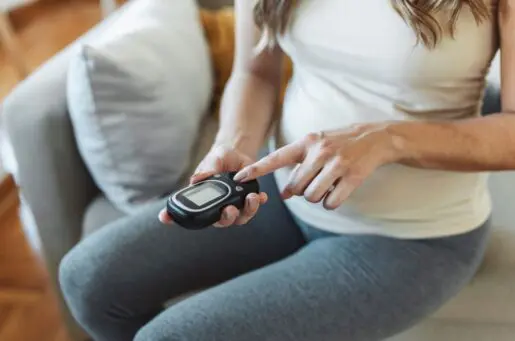COVID-19
Could the Common Cold Help Stop Covid-19? We Need to Know–Now.
In an essay published in Scientific American, we call for immediate and intensive research into the possibility that exposure to one of the coronaviruses that causes the common cold could decrease the severity of Covid-19, and could be leveraged to expand what’s been called “pre-existing” immunity to the disease by deliberate transmission of common cold coronaviruses.
We wrote in that article: “Today, we know that recent exposure to common cold coronaviruses confers T cell cross-reactivity against components of SARS-CoV-2, and that people with stronger T cell responses tend to experience fewer Covid-19 symptoms. However, we lack direct evidence that recent shCoV exposure can reduce disease severity.”
Hastings Bioethics Forum has provided us an opportunity to expand upon our proposal. Here we respond to questions that have been posed to us by readers.
What is the hypothesis that you think is worth testing?
Indirect evidence from a variety of sources suggest that recent exposure to a seasonal human coronavirus (shCoV) (aka “common cold coronavirus”) may reduce the severity of COVID-19 upon infection with the novel coronavirus SARS-CoV-2. Our piece urges the scientific community, including funders, to produce evidence to directly support or refute this hypothesis. We do not know if recent exposure to a common cold coronavirus provides protection against severe Covid-19. We argue that this is worth finding out.
Why do you think we should test this hypothesis?
We should test this hypothesis because even in the best case scenario, where a vaccine is approved and licensed in the United States by the end of 2020, difficulties in the logistics of delivering vaccinations, combined with vaccine hesitancy in the United States, means that it will be many months if not years before enough people are vaccinated to achieve “herd immunity” in the United States.
But more pressing and ethically salient to our argument, countries that are not wealthy enough to have proactively bought up vaccines and distribution supplies will be waiting for a vaccine for several years. The British charity Oxfam estimates that nearly two thirds of the world’s population will not have access until at least 2022. Deliberate transmission of common cold coronaviruses–if they prove protective against severe Covid-19–could be one among other important tools (e.g., masks and physical distancing) to control morbidity and mortality from Covid-19 in the meantime.
Does this mean the common cold could provide “herd immunity” to Covid-19?
Probably not. The evidence suggesting that common cold coronaviruses might be protective indicates that it may reduce the severity of Covid-19 symptoms and save lives, not that it would prevent infection in the first place. It may well reduce transmission, but probably not enough to reach herd immunity.
Are you saying that deliberately spreading the common cold could help end the pandemic?
No. We’re recommending that scientists investigate a possible way to save lives in the meantime. If the immune response to the common cold does reduce the severity of Covid-19, communities could use deliberate transmission to protect the vulnerable in a matter of weeks.
How might we decide among the methodological options you list for testing the hypothesis?
Our post mentioned four methods that would produce evidence directly testing the “clinical protection hypothesis.” Evidence from studies that adopted these methods would either support or refute the hypothesis. Each method comes with its opportunity costs and value tradeoffs. For example, re-analyzing data already collected through electronic health records or in the context of a vaccine trial does not activate additional human subjects protections, is inexpensive, and would be relatively quick once the data are accessible to researchers. However, retrospective analyses are not as reliable as prospective, controlled trials. That is, they are unlikely to provide knock-down evidence supporting or refuting the hypothesis. The randomized controlled trials mentioned–both the field trial and the challenge study–are the “gold standard” for efficacy testing, but these will expose human subjects to risks, require quite a bit of coordination and human resources and as such, are expensive. However, though they take a bit longer to coordinate and execute, these trials will produce evidence reliably supporting or refuting the hypothesis, definitively answering our motivating question.
These–and other–methodologies for testing the hypothesis should be debated within the wider scientific, ethical, and global communities. Whatever method is used, all experiments with human subjects will undergo ethical review within local institutional review boards.
Does this mean I can stop wearing my mask and physically distancing?
No! We do not know if recent exposure to a common cold coronavirus provides protection against severe Covid-19. Based on what we know right now, the very best way to protect yourself, your loved ones, and the communities where you live and work is to prevent infection. Masks and distancing prevent infection.
Are requirements to wear masks and to physically distance misguided?
No! We do not know if recent exposure to a common cold coronavirus provides protection against severe Covid-19. Based on what we know right now, the very best way to protect yourself, your loved ones, and the communities where you live and work is to prevent infection. Masks and distancing prevent infection.
Doesn’t this mean that we would be better off had we not heeded advice to wear masks and physically distance?
No! Common cold coronaviruses are not transmitted as easily as SARS-CoV-2; if we hadn’t used distancing and masks to prevent infection, many more people would have died. We do not know if recent exposure to a common cold coronavirus provides protection against severe Covid-19. The very best way to protect yourself, your loved ones, and the communities where you live and work is to prevent infection. Masks and distancing prevent infection.
Should we stop looking for a vaccine since an already existing alternative may be at hand?
No! A vaccine will be more effective at preventing serious outcomes from Covid-19 than recent exposure to common cold coronaviruses. If the hypothesis proves correct, deliberate transmission of common cold coronaviruses will provide some protection to people who lack access to a vaccine, for whatever reason, in the time between proving the hypothesis and accessing a vaccine. But still, when safe and effective vaccines are available, everyone should be vaccinated. Research funders should not divert funding from vaccine development research.
What measures should be in place before a community undertakes deliberate transmission of common cold coronaviruses?
First, we need solid evidence that deliberate transmission of common cold coronaviruses protects against severe Covid-19. We do not know if recent exposure to a common cold coronavirus provides protection against severe Covid-19.
If this is established, communities will need a “first donor” who is known to have a common cold coronavirus (either a person known to harbor one of the shCoVs, or more likely, someone who can self-infect with a purified sample). Material resources include Q-tips and plastic bags to obtain, transport, and deliver shCoV viral samples. Because future donors must be isolated before and during transmission of the shCoV, communities will need some infrastructure for supporting isolation, including food and medicine delivery.
Finally, the more testing capacity for SARS-CoV-2, the better. The primary risk of any deliberate transmission strategy is the inadvertent transmission of SARS-CoV-2. All donors need to be repeatedly tested for SARS-CoV-2 prior to donating, so that when a Q-tip is used to swab the inside of their nose, only common cold coronaviruses are obtained, and no SARS-CoV-2. Isolation prior to donation is absolutely essential to minimize the risk of co-infection, with testing providing additional surety.
Because common cold coronaviruses are thought to be relatively safe–just about everyone has been infected–and transmission does not involve manufacturing or distributing anything new, a community–driven program to spread it, that takes the precautions we outline, could scale up very quickly.
Are all colds caused by coronaviruses?
No. Colds can be caused by a variety of virus types, most of which are rhinoviruses.
If my friend has a cold, should I go to their house and ask them to sneeze on me?
No! Since colds can be caused by a variety of viruses, you cannot know for sure that the sneeze will contain droplets of a common cold coronavirus. It may instead contain rhinovirus, influenza virus, or any other little bug. It is more likely than not that you would develop a cold with no added benefit. Even if it did contain a common cold coronavirus, we do not know if recent exposure to a common cold coronavirus provides protection against severe Covid-19. A false sense of protection from disease undermines public health.
More concerning, if your friend is also harboring SARS-CoV-2, the sneeze will contain those droplets as well. To prevent the inadvertent spread of SARS-CoV-2, it is unwise to intentionally sneeze on someone else or ask to be sneezed on. Based on what we know right now, the very best way to protect yourself, your loved ones, and the communities where you live and work is to prevent infection. Masks and distancing prevent infection.
Why did you write this piece?
We wrote this piece because we’ve seen mounting evidence in support of this hypothesis from a variety of sources, but no one has put together the pieces in print to suggest that, if supported by direct evidence, deliberate transmission of common cold coronaviruses could possibly protect billions of people from the most severe effects of Covid-19. To use BMJ’s language, if “pre-existing immunity” to COVID-19 can be explained by common cold coronaviruses, we can expand immunity by deliberate transmission of common colds. We think that the clinical protection hypothesis is worth testing, and that deliberate transmission is worth considering and discussing now, with some lead time to debate its risks, benefits, feasibility, and wisdom. We think this discussion should happen in public forums, rather than behind closed doors at government agencies or public health NGOs or private laboratories.
What do you hope happens next?
We hope that funders of research will read our piece and consider funding scientists who have the expertise and enthusiasm to test this hypothesis, and debate over how to do so. Neither of us have that expertise.
We also hope to spur a conversation about the risks, benefits, feasibility, and wisdom of a deliberate transmission strategy as this hypothesis undergoes testing. We think this discussion should happen in public forums, and across the globe, as different nations and states may weigh differently the risks, benefits, and value tradeoffs of various approaches to protect their communities.
Kevin M. Esvelt, PhD, is an assistant professor at the Massachusetts Institute of Technology’s Media Lab, where he leads the Sculpting Evolution Group in exploring evolutionary and ecological engineering. Twitter: @kesvelt. Carolyn P. Neuhaus, PhD, is a Hastings Center research scholar. Twitter: @carolynpneuhaus.














Comment on the article by Esvelt and Neuhaus, published on September 28. The document contains a potentially confusing use of terminology that merits a comment. The authors conflate the terms “infection” with “disease”. Virtually no existing vaccine and no naturally acquired viral infection (with some exceptions) confers longlasting protection against “infection”. Infection means the virus enters the body by any portal and replicates. The result may be “disease” (symptoms and signs of infection) or there may be no disease. Usually infection is heralded by either a primary immune response (if the virus is new to the immune system) or what is called an “anamnestic” response, which essentially means that a pre-existing immune response is boosted. Boosting of the immune response is heralded by a dramatic rise in antibody titers or in other signs of immune defense. Detection of that immune response is the only way to diagnose an asymptomatic infection. If you have pre-existing immunity (in most cases) you are much less likely to experience disease. When FDA evaluates a vaccine for efficacy using results of a large scale phase 3 study, the primary endpoint is prevention of disease, not prevention of infection. In designing such a study, the sponsor states a priori what will be the diagnostic criteria for identifying a “case”. A case defines a person with disease, in turn. During the course of such a trial, which typically spans a period of close observation over at least one to three or more years after vaccination, participants are usually contacted periodically to determine their current and recent previous health status, and/or they are carefully instructed to contact study monitors to report symptoms that fit the pre-defined case definition, e.g., “fever” usually plus some other sign or symptom. As rapidly as possible after such a report is made, diagnostic tools are used (e.g., tests to identify the virus) to prove the presence of the disease, and this constellation defines a case. In analyzing results of a successful vaccine trial, one might find many infections in the vaccinated group but with much fewer cases of disease than in the control group. Because of the huge numbers of subjects needed to perform a phase 3 trial, it is not practical to look for total infections among all subjects. Instead, there is usually an “immunological cohort”, a subset of the total participants, in which such data can be followed. Participants who are selected for the immunological cohort are periodically tested for antibodies or for a cell mediated immune response that might herald an infection, with or without signs and symptoms. All of the foregoing applies to longstanding tradition at FDA. For COVID19, it appears that a vaccine or vaccines may receive at least conditional approval from FDA on slimmer evidence of efficacy. Based on predictions of an approved vaccine before the end of 2020, it seems the results of ongoing trials will be evaluated after only a few months post-vaccination, and the criteria for success will be some novel combination of an antibody response combined in some way with disease prevention. I have no way of knowing exactly what FDA will accept, except to say the evaluation will be different from the traditional route, and evidence for the durability of the protective response will be lacking due to the short time interval between vaccination and assessment. By the way, there IS such a thing as preventing infection AND disease, but no regulatory agency requires both endpoints to be met. That state is referred to as “sterile immunity”; you are exposed to the virus, but it does not even replicate in your body to a sufficient extent that your pre-existing immunity is boosted. If you recognize the distinction between infection and disease, and realize that prevention of infection is a nice idea but not mandatory, then we can be more optimistic about a COVID vaccine. The question then arises whether vaccinated persons who are protected from disease when naturally exposed to the virus will be infectious for un-vaccinated persons with whom they come in contact. This question arises in light of the fact that persons with naturally acquired asymptomatic infections are themselves infectious for others during the period that they shed virus in their secretions. Time will tell.